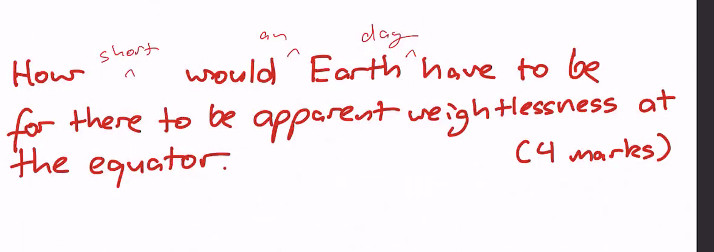Gravity is Universal
- This implies that all objects attract each other with a force of gravitational attraction.
- This force is dependent on the mass of the objects and inversely proportional to the square of the distance between the two objects (known as the inverse square law).
Gravity Distance Mass Law
- Generally:
- Higher Mass -> Higher Force (2x Mass -> 2x Force)
- Higher Distance -> Lower Force (2x Distance -> 1/4x Force)
Law of Universal Gravitation
- Any mass located in close proximity will experience a gravitational force. This force can be calculated as:
- F = force between two mass (N)
- G = Universal Gravitational Constant
- M = mass object 1 (kg)
- m = mass object 2 (kg)
- r = the distance between object 1 and 2 (m)
Gravitational Fields // Effects of Gravity
- Because two objects mutually attract one another (e.g. the force that earth pulls the moon with is same as the force the moon pulls the earth with):
- it does not matter which mass we call M and which we call m
Weight, Apparent Weight, and Weightlessness
- Mass: A measure of amount of matter in an object.
- Weight: A measure of the force of gravity on an object.
- Using Newton’s third law, we know that, if a person stands stationary on level ground, they will experience a normal force from the ground equal and opposite to the force of gravity on them. This is their apparent weight.
- If an elevator moves downwards, there is a net force pointing towards the ground, therefore the person in the elevator will feel lighter.
teacher recommends to draw a diagram in questiosn like this.
- If acceleration downwards is equal to gravity, N = mg - ma = ma - ma = 0. Therefore you would be weightless. This is true for all objects in free fall!
- When in orbit, space station experiences gravitational acceleration of . Since i is orbiting in a circle, it must also be accelerating towards centre (centripetal acceleration - 2024 topic)
- If the centripetal acceleration is equal to the gravitational acceleration, there is no normal force, therefore you would be weightless.
Gravity, Kelper’s 3rd Law & Energy Conservation
- NO ANGULAR MOMENTUM !
- 4 fundamental forces
- gravity
- electromagnetism
- snf (LAST TOPIC)
- wnf (LAST TOPIC)
-
- two mass is different
- it can be interpreted m is smaller mass and M is bigger mass
- there is gravitational force between two objects, and you can qualify it with the formula
- only significant if the two masses is quite large
- r = distance between two objects
- F = mg -> 9.8
- electric field diagrams
- ahhhh
- acceleration due to gravity on earths surface gravitational field strength
rewording it using "gravitational field strength" => 9.8N/kg U WILL LOSE MARKS IF YOU DONT GIVE IT AS THAT. "acceleration due to gravity" 9.8ms^-1
- G = 6.67 x 10^-11 M = 5.97 x 10
- satellite: something orbiting another object.
- people gets tripped up by radius: actually using correct radius, convert km to m!
- people tripped up by square!!!!!1
- towards the Earth
- why is the gravity different at equator vs ?
- centrifugal force of the earth.
- gravity force is being partially to maintain the precense of centrifugal motion.
- satellite
- moon around the earth is ?? gravitational force
- defined as any body with mass that is orbiting another body (also having mass) * where the orbit is stable
- artificial vs natural satellite
- artifical: international space system, acting as a satellite not from nature
- moon is natural satellite to earth and so is earth (to sun)
- geosynchronous vs geostationary
- geostationary
- around the equator
- 24h
- geostationary
KEPLERS 3RD LAW
- HOW TO DERIVE
- WHEN A SATELLITE IS REVOLVING AROUND AN OBJECT
- THE ONLY force that is pulling the satellite towards the earth is the gravitational force.
- satellite has centripetal force and motion
- v^2 = G m/r
- by cancelling out centripetal force and the other force formula
- relate this formula to period through ..?
- formula (2pi/r)
- 1 rev: t=T period seconds
- revise how to derive keplers 3rd law
- GM/4pi^2=r^3/T
- Fc = Fg
- equate two formulas
- substitute period for velocity
- practice practice practice
- Calculate orbital radius
- satellite (h) metres above earth’s surface is moving at 6.6 x 10^3 m/s
- M=5.97*10^24, G=6.67*10^-11, r=6.37*10


- when converting years to days, it is better to convert it to 365.25, ask the teacher tho to be safe
- apparent weightless is when the Fn= 0
experiment:
81.5g ball thing being thrown around 50.3 weight without weights